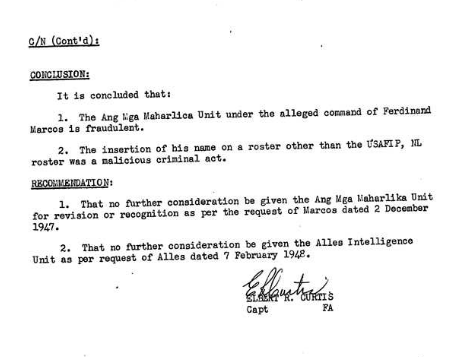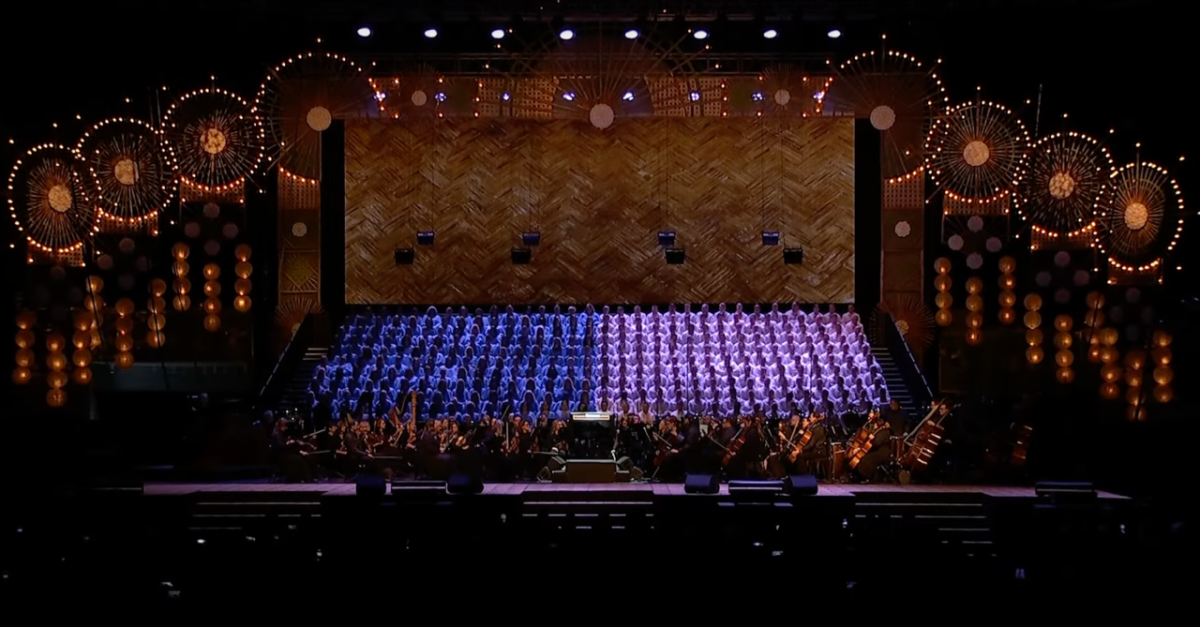War brings out the best and the worst in people. This was true for all Filipino families that lived through the Japanese Occupation in the Philippines that lasted from January 1942 to September 1945.
The traumatizing part of the war, perhaps, aside from the ghastly human atrocities, and desperation caused by famine was the breakdown of trust among fellow Filipinos. Amidst death and conflict, it was hard not to see the complexity of everything in black and white—Filipinos versus invaders, American defenders versus Japanese “butchers”, Filipino guerrillas versus Filipino “kolaborator” (collaborator). Of course, each person then had reasons for doing what they did—whether for survival, for security, or for freedom.
This was true in the case of the Marcoses.
It was said, according to the Marcos-authorized Marcos of the Philippines by Hartzell Spence, that before the Japanese invasion, President Manuel L. Quezon offered Marcos the post of Chief Prosecutor in the Department of Investigation after he won in the Nalundasan case. Quezon was quoted as saying:
“You are on the threshold of an astounding career, if I am any judge… You are the most famous young man in this country. You can capitalize on that to catapult yourself into a political career.”
Marcos turned down the opportunity, and preferred instead the practice of law with his uncle Pio and father Mariano.
When war came to the Philippines, Marcos was already drafted into service, claimed by Spence, under the Philippine Constabulary. But records show he was actually a Reservist and was drafted into the 21st Division in the United States Army Forces in the Far East (USAFFE) as an Intelligence Officer. Spence claims Marcos fought in the Battle of Bataan. But maybe the more apt phrase was that he fought not through arms (he was never assigned to the frontlines) but via intelligence work, which was mostly clerical work and clandestine spying on enemy positions.
This was where Hartzell Spence’s biography of Marcos should be corroborated in the light of contesting evidences that contradict the book.
Spence’s said, as repeated again and again by Ferdinand Marcos in his speeches as president, that General Douglas MacArthur himself pinned on Marcos the Distinguished Service Cross. He was then subsequently awarded by the United States the Silver Star Medal for attacking…
“… a greatly superior enemy force which had captured the outposts and machine gun emplacements of the 1st Infantry in reserve, culminating in driving the enemy back who had infiltrated the bivouac. His coolness of conduct under fire, exemplary courage and utter disregard for his personal safety inspired the men under him to act like veteran soldiers.”
Moreover, Spence added that Marcos was conferred the U.S. Congressional Medal of Honor with the citation that hailed him for “extraordinary heroism and valor beyond the call of duty in suicidal actions against overwhelming enemy forces.” The citation as quoted in Spence’s book, continued:
“By his initiative, his example of extraordinary valor and heroism, courage and daring in fighting at the junction of the Salian River and the Abo-Abo River, he encouraged the demoralized men under him, inflicting heavy casualties on the enemy and successfully blocking the Japanese 9th Infantry…”
With a short disclaimer though, Spence inserted:
“Had the papers not been lost in the last days of Bataan, Marcos would have been the only Filipino army officer to win the United States’ highest valor award in the Bataan campaign.”
The only problem was, these were all a sham.
The only problem was, these were all a sham.
From the main players of the war like Generals Douglas MacArthur, Jonathan Wainwright, or Maj. General Edward P. King—none of them ever mentioned Marcos in their memoirs nor in recorded interviews. They did not even hint that there was a Filipino who garnered these military honors from the United States. If ever this was a cover up, this doesn’t make sense.
If Marcos indeed fought as he claimed, it was impossible not to be noticed by the USAFFE, which accorded honors to Filipino war firebrands with the likes of Jesus Villamor, and Ramon Alcaraz, among others. What about these honors to Marcos not even being mentioned by the living veterans of the time? And yet the glaring silence of the records in the U.S. National Archives and Records Administration (NARA) on these supposed Marcos medals is very telling.
Spence effectively laid out the Marcos version of the story:
After the Bataan Death March, Marcos became a Prisoner of War in Camp O’Donnell. Josefa Marcos, Ferdinand’s mother, was said to have appealed for his release, and it was granted, upon having convinced the Japanese that Josefa too was Japanese based on her features.
A hesitant Ferdinand came home, but a short while later, was taken again and moved in the dungeons of Fort Santiago for allegations of espionage. He would be tortured, beginning in the evening of August 4, 1942, and after days, Marcos would be released, on the condition that he would lead the Japanese to the hideouts of some guerrillas led by Vicente Umali. The Japanese contingent would be ambushed, and Marcos, rescued by none other than Umali.
After this, Marcos established the Maharlika Guerrilla Unit (term based on the social status of free men/warriors during the Pre-Colonial Period) which was claimed by Marcos to have operated on clandestine and daring missions throughout the duration of the occupation, eventually being the Filipino guerrilla to have resumed contact with Gen. MacArthur and the Allied forces.
*Part of the Marcos propaganda film “Iginuhit ng Tadhana” (1965).
Again, historical primary sources say otherwise.
Again, historical primary sources say otherwise.
Researcher Marie Vallejo through the Philippine Veterans Affairs Office (PVAO), had made almost all Filipino guerrilla files available online, thanks to her untiring efforts in scouring the archival materials in the United States.
A file significant to our discussion which can be accessed online is the “Ang mga Maharlica” Grla Unit files, which contain only the names who were supposed members of the guerrilla unit, but upon close inspection were close allies of the Marcoses before the war. A significant number were also family members. Furthermore, the names were all from Ilocos Norte.
The claim was submitted by Marcos to the U.S. Army in 1947, expecting reparations money and veteran benefits. A short paragraph on the first page was the scathing judgment of the U.S. military against him, concluding that these records Marcos submitted were “fraudulent” and “malicious.”

Moreover, as cited by Raissa Robles, survivors of the Japanese torture machine in Fort Santiago, like Conrado Agustin (whose memoir was approved by the Marcos administration itself), never even mentioned nor ever remembered Marcos being tortured there.
Ferdinand Marcos also told of how Mariano Marcos, the father, was “shunned” by the guerrillas and eventually tortured to death by the Japanese. And yet, records show that the guerrillas themselves were the ones who executed the man on March 8, 1945 for being a collaborator with the Japanese.
The Maharlika unit’s exploits in the Battle of Bessang Pass, the battle that ended the last Japanese foothold in the Philippines, was also put into question, not only by the silence of the documents and veterans, but also, when a credit given to an honored soldier would be unjustly be taken by Marcos as his.
It must be remembered that during the Presidential Elections campaign in 1965, Marcos heavily relied on these claims of superhuman achievements as his own.
So was it all really a lie?
Not all. But seeing how convoluted this is, it’s hard to sift truth from lies.
How did he get away with it… for so long?
For one, the information we know now was not available then especially when Marcos won the presidential elections the first time in 1965.
Another thing to consider is that, for most of the time war veterans preferred to be silent of their ordeal due to the traumatic emotional scars they could never forget, while others remained silent (as was the case with the Rigor family) to cause no fuss. But memoirs are there for all of us to read, but unfortunately, they remain unread.
Third, the audacity of Marcos is such that he was willing to muddle truth to achieve his aim—a true pragmatist. This truth-fused-with-myth was but part of this Marcos myth-making propaganda, a thing the Marcoses would excel in, especially during Martial Law.
As concluded by acclaimed The New Yorker journalist Raymond Bonner:
“It was all a monumental fraud, and Marcos was nothing if not daring in perpetuating it.”
BIBLIOGRAPHY
___. Why Ferdinand E. Marcos Should Not Be Buried at Libingan ng mga Bayani. Manila: National Historical Commission of the Philippines, 2016.
Ariate, Joel and Reyes, Miguel, “File No. 60: A Family Affair,” The Philippine Star, July 4, 2016, link.
Bonner, Raymond. Waltzing with the Dictator: The Marcoses and the Making of American Policy. New York: Times Books, 1987.
Mijares, Primitivo. The Conjugal Dictatorship of Ferdinand and Imelda Marcos. San Francisco: Union Square Publications, 1976.
Gerth, Jeff, “Marcos’s wartime role discredited in U.S. Files,” The New York Times, January 23, 1986, link.
Robles, Raissa. Marcos Martial Law: Never Again, Student Edition. Quezon City: Filipinos for a Better Philippines, Inc., 2016.
Smith, Robert Ross. The War in the Pacific: Triumph in the Philippines. Washington, D.C.: Center of Military History, U.S. Army, 1991.
Spence, Hartzell. Marcos of the Philippines: A Biography. New York: The World Publishing Co., 1969.
Editor’s note: This 15-part series called the Road to Martial Law first appeared on the author’s Tumbler page. It documents the unprecedented rise of a Filipino dictator and the sudden death of Philippine democracy with the declaration of a nationwide Martial Law via live television on September 23, 1972. Minor edits have been made by SubSelfie.com editors.
Part 1: It Takes a Village to Raise a Dictator: The Philippines before Martial Law
Part 2: THE ROAD TO MARTIAL LAW: MARCOS BEGINNINGS
Part 3: TRUTH OR DARE?: MARCOS DURING WWII
Part 4: THE TURBULENT ’60S AND MARCOS’ ASCENT TO POWER
Part 5: The GATHERING STORM: BEGINNINGS OF THE COMMUNIST INSURGENCY AND MORO SECESSIONISM IN THE ’60S
Part 6: First Quarter Storm of 1970: Philippines on the Brink
Part 7: Plan for Endgame: Plots, Protests, Scandals and Assassinations
Part 8: Plaza Miranda Bombing: Prelude to Marcos’ Endgame
Part 9: Hijacking Democracy: The Mood Before the Declaration of Martial Law
Part 10: September 21, 1972: When Martial Law Had to Wait for One More Day
Part 11: Like a Thief in the Night: Martial Law Implemented
Part 12: The Long Night Begins: Martial Law Announced on Live TV
Part 13: A Mere Scrap of Paper: The Constitutional Convention Hijacked under Martial Law
(up next) Part 14: The Final Blow: A compromised Supreme Court legitimized Martial Law
(up next) Part 15: Road to Martial Law Redux: A Conclusion to a Series
About the Author

Kristoffer Pasion the resident historian of Team SubSelfie.com. He is a public historian working for the National Historical Commission of the Philippines. He has been serving in government for almost a decade, having worked as cultural officer for the National Commission for Culture and the Arts (2011-2013), and as history researcher for the Official Gazette of the Republic of the Philippines (2013-2016).
He runs the blog Indiohistorian, and does active history writing on social media. He is finishing his masteral studies in History at the University of the Philippines in Diliman, pursuing research on the history of government institutions.








